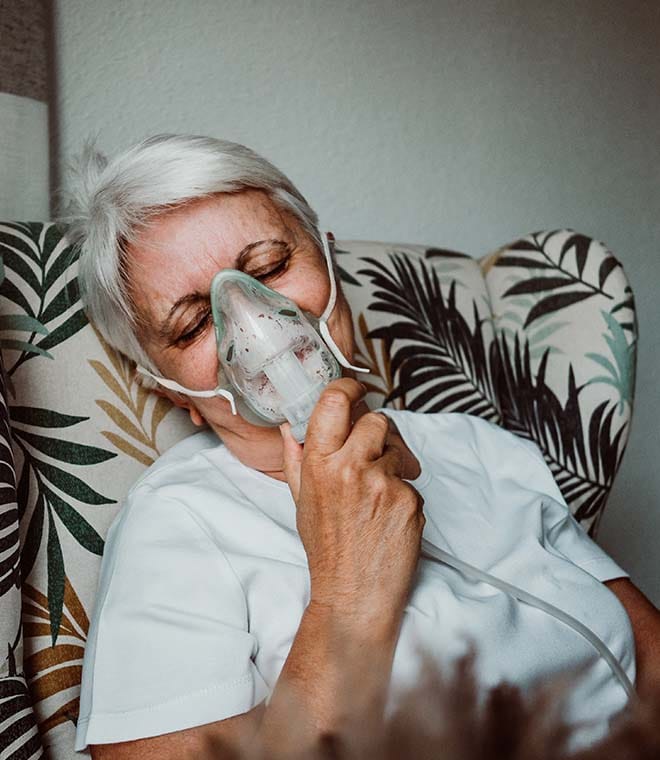Health
What are the early signs of lung cancer?
By Dennis Galvon, MD Nov 26, 2024 • 5 min
Approximately one out of every 16 men and one out of every 17 women develop lung cancer. Early diagnosis and treatment can improve outcomes for those diagnosed with lung cancer. Smokers and individuals exposed to secondhand smoke account for the majority of people who develop lung cancer. However, 20% to 25% of lung cancer cases occur in people who have never smoked. Although lung cancer may not cause any symptoms until it has progressed, there are several symptoms that may be associated with lung cancer. These may include:
- Cough: Persistent coughing is the most common symptom of lung cancer. When cancer causes irritation in the airways, the cough may be dry, while cancer-related fluid accumulation in the lungs can result in a wet cough. See your healthcare provider if you have a persistent cough with or without blood or mucus mixed with blood.
- Breathing problems: Lung cancer may interfere with normal breathing by blocking and irritating the airways or causing fluid accumulation in the lungs. You may experience shortness of breath when at rest or performing everyday activities. Wheezing and other types of noisy breathing can also be signs of lung cancer or another health condition, such as asthma.
- Weight loss and fatigue: Like other types of cancer, lung cancer can cause unexplained weight loss. Some people also develop a loss of appetite due to the effects of cancer. Fatigue is another common symptom of lung cancer, as well as other forms of cancer. You may feel tired despite getting enough sleep at night, or you may have less endurance while performing activities that were once easy for you.
- Frequent illness: People with lung cancer often suffer from recurring respiratory infections, such as bronchitis and pneumonia. It may also take longer for those with the disease to recover from infections.
- Swelling: Some people with lung cancer develop superior vena cava syndrome (SVCS), a group of symptoms that occurs when something restricts the flow of blood from the upper body to the heart. One of the most common signs of SVCS is swelling of the face, neck, arms or hands.
- Clubbing of fingers: Lung cancer can cause changes in the hands and nails, commonly referred to as clubbing. People with clubbing may notice a softening of their nailbed or their nails curving downwards as they grow. Swelling and redness of the fingers between the top joint and the tip may also occur. Clubbing may occur with other health conditions as well, such as cardiovascular disease or cystic fibrosis.
The importance of lung cancer screening
As with most forms of cancer, symptoms of lung cancer may not develop until the disease has progressed to the point where it has begun to spread. When this occurs, it’s more difficult to treat.
If you have symptoms or are at a higher risk of developing lung cancer, you should see your medical provider for an evaluation and testing.
The US Preventive Services Task Force recommends yearly lung cancer screening with a low-dose CT scan for those who are at high risk. Individuals defined as high risk are between the ages of 50 and 80 with a 20-pack-a-year or more smoking history, and who smoke now or have quit within the last 15 years.
Anyone who is at risk for lung cancer due to a history of smoking, their work, family history and other factors should ask a healthcare provider about lung cancer screening.
Updated November 2024.
Sources:
- https://medlineplus.gov/lungcancer.html
- https://www.mayoclinic.org/diseases-conditions/lung-cancer/symptoms-causes/syc-20374620
- https://www.mayoclinic.org/diseases-conditions/dysphagia/symptoms-causes/syc-20372028
- https://my.clevelandclinic.org/health/diseases/4375-lung-cancer
- https://my.clevelandclinic.org/health/diseases/23304-superior-vena-cava-syndrome
- https://www.cancer.org/cancer/types/lung-cancer/about/key-statistics.html
- https://www.cancer.gov/types/lung/patient/lung-screening-pdq
- https://www.ncbi.nlm.nih.gov/pmc/articles/PMC8024804/
- https://www.mdanderson.org/cancer-types/lung-cancer/lung-cancer-symptoms.html
- https://www.mdanderson.org/cancerwise/dysphagia-in-cancer-patients--what-to-know-causes-diagnosis-prevention-treatment.h00-159305412.html
- https://www.mountsinai.org/health-library/symptoms/clubbing-of-the-fingers-or-toes
- https://www.uspreventiveservicestaskforce.org/uspstf/recommendation/lung-cancer-screening



